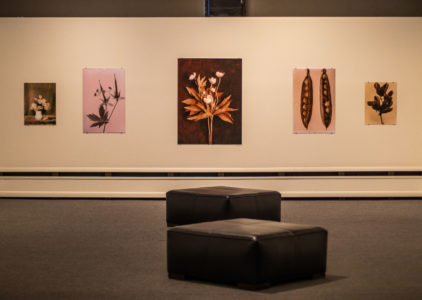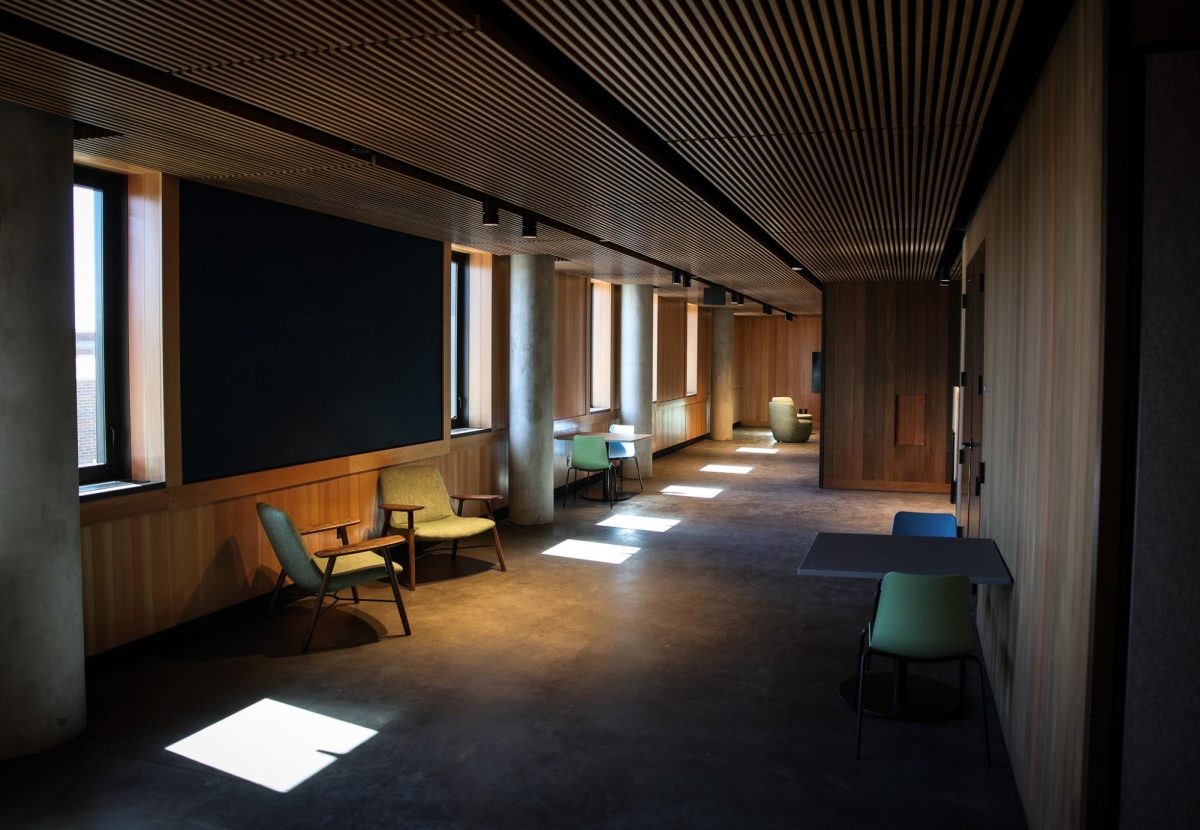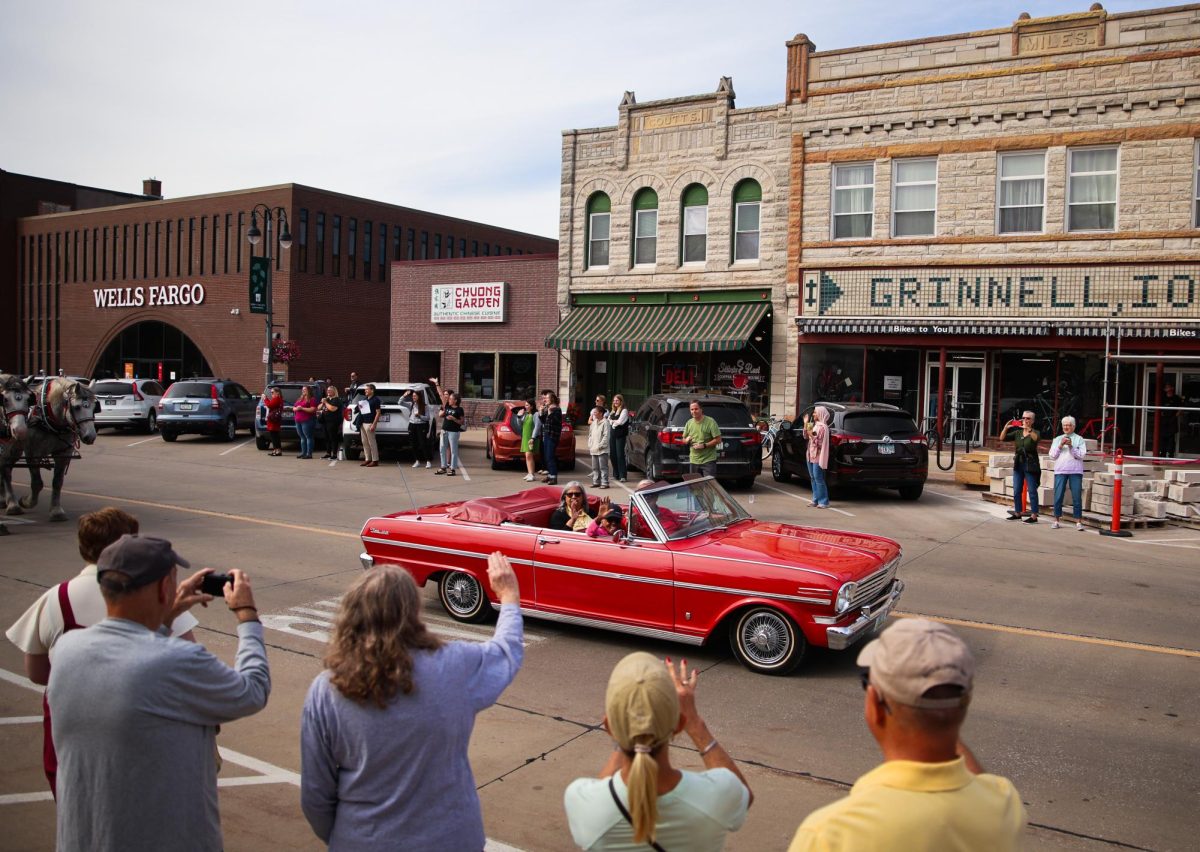The Grinnell Historical Museum has named 2019 the “Year of Cornelia Clarke.” But who was Clarke, and why does she merit this designation?
Cornelia Clarke is a study in contradictions. She lived in Grinnell for most of her life, yet her photography depicted subjects from around the world. She photographed nature, yet the technology of the time was not well-adapted to such subjects. She was a renowned photographer in her time, yet her work was misattributed and discarded following her death.
None of the contradictions concerning Clarke’s life, however, cloud her photographs, which bridge the gap between scientific documentation and art, featuring natural imagery such as milkweed pods or blossoming fungi that leap out of their austere backgrounds. Exhibited collectively for the first time at the Grinnell Area Arts Council in an exhibit curated by the Grinnell Historical Museum, Clarke’s remarkable clarity of vision and technical control over her medium distinguishes her work not only as exceptional for its time but worthy of contemporary study and admiration.
Yet the originals of Clarke’s prolific career were almost relegated to a dusty corner of the University of Iowa archives. To trace the origin of her work and discover why it was almost lost, one must start at the beginning of Clarke’s life in Grinnell.
Born in 1884, Clarke grew up in Grinnell, raised by a single father following her mother’s death in childbirth. She gained a deep appreciation for nature and the technical skills of plate photography from her father. Clarke attended Grinnell College and majored in English and History, taking a year off after her third year to travel in Europe with her father. She first achieved recognition for her posed photographs of dressed up cats that served the basis of the 1912 picture book, Peter and Polly, earning her the nickname of Grinnell’s Beatrix Potter.
Clarke expanded her photographic reach after Peter and Polly, beginning her career in nature photography in the 1920s. Clarke’s work, documenting plants, insects and animals, was published in various journals, magazines and newspapers, including the Los Angeles Times and the World Book Encyclopedia. Clarke earned various awards from organizations including American Photography and Photo-Era magazine for her intricate depictions of nature.
“The closer I got to look at these photographs, the more amazed I was,” said Professor Emeritus Dan Kaiser, history, and a local expert on Clarke, when remembereing the first time he saw the negatives.
Kaiser had identified Clarke as an interesting story for his local history blog, Grinnell Stories, in 2017. While researching her, he realized that the negatives of her work had disappeared. Frustrated by the disappearance of Clarke’s work, Kaiser set out to track down her original photographs.
By chance, Kaiser noticed an Iowa Annals listing of their new acquisitions that included a collection of 1100 glass plate negatives, attributed to Henry Conard. The negatives had been saved from the dissolution of the University of Iowa’s botanical school. Clarke had willed over 3,000 glass plate negatives of her photography to Henry Conard, former Grinnell professor and namesake of the Conard Environmental Research Area, following her death in 1936. Conard retired from Grinnell in 1944 and became involved with the botany department at the University of Iowa following his retirement, most likely taking the negatives with him.
Kaiser made the connection between Conard and Clarke and traveled to the State Historical Society of Iowa archives to investigate. He realized that although the plates were labeled as Conard’s, most of the prints had a stamp on the back: “Cornelia Clarke, nature photographer.”
Clarke’s stamp clearly claimed the photos as her own, but appraisers had overlooked her ownership in favor of Conard’s more established, and male, name.
“Henry Conard did a lot of great things here, not all having to do with botany, but I think he really let Cornelia Clarke down,” Kaiser said. “This is a case where a woman’s reputation was in a man’s hands and he didn’t treat it very well.”
The treatment of Clarke’s photos following her death paralleled her lived experienced as a single, woman photographer in the early 1900s. Kaiser tracked down records at the Smithsonian Museum from the journal Science Newsletter, which published Clarke’s work, showing that the magazine paid her a dollar per photograph. Adjusting for inflation, a dollar in 1930 is only the equivalent of around $15, today.
“It was a scandal, even then,” Kaiser said.
Since his initial blog post, Kaiser has become “fascinated” with Clarke. He petitioned to get Clarke inducted into the Iowa Women’s Hall of Fame. His petition last year was declined, but the application remains open for three years, and Kaiser intends to submit additional materials to the Hall of Fame.
Teaching Russian history during his tenure at Grinnell, Kaiser says that his research on Clarke has affected him more personally than much of his other work. He views his work to tell Clarke’s story through writing and putting together the exhibit as an effort to “right the scales.”
The exhibit at the Grinnell Area Arts Council features 25 photographs from the 2300-negative cache found at the State Historical Society. Many of the prints are tinted pink due to damage incurred at the University of Iowa, but the hue does not diminish the striking quality of Clarke’s work on a larger scale.
Pea pods, still lifes of peaches and dandelion seed pods splitting apart filled the Arts Council’s gallery space alongside information about Clarke’s career and life in Grinnell. The exhibit was organized by subject matter. Eric Jarvis, event coordinator for the Arts Council, assists artists in hanging their shows at the gallery. For this installation, he was assisted by five members of the Historical Museum. A calendar with Clarke’s photographs titled “The Year of Cornelia” is also on sale at the Museum and prints are available to purchase by request. The exhibit received a warm reception from the community, with community-members of all ages visiting the show throughout its tenure.
“I wish she were here to enjoy some of it,” said Kaiser.
The “Forgotten Photographs: Cornelia Clarke’s Botanical Images” exhibit has closed, but her work is available on Digital Grinnell and on the State Historical Society of Iowa website.


























































